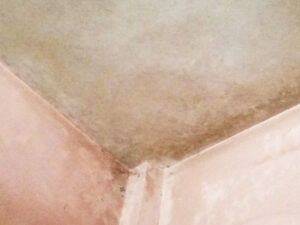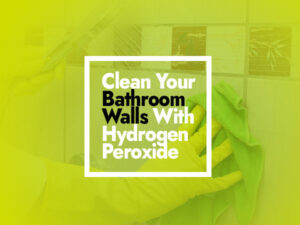Those of you who have experienced flooding understand the stress it can cause, from fixing property damages to dealing with emotional strain. Rug and wall damage are particularly hard to deal with following flood cleanup. Even small amounts of water can do immense damage if left to accumulate for too long.
As someone who has experienced flooding first-hand, I know the value of having a plan when cleaning up after one. Though it can be tempting to dive right in and rip up carpets and tear down walls immediately, taking a systematic approach will save time, money, and stress in the long run.
In this article, I’ll go over how to clean carpets and walls after a flood. I will demonstrate all of the tools necessary for getting back your home to how it was before the flooding occurred. From what supplies are necessary, all the way through how to repair surfaces step by step. These tips can help you quickly take charge of getting everything back in its rightful place as soon as possible.
Step-by-Step Guide to Cleaning Carpets and Walls After Flood

Doing battle with the aftermath of a flood can be daunting, particularly when it comes to cleaning and restoring carpets and walls afterward. Even small amounts of water can do considerable damage if handled improperly. We will discuss in-depth our step-by-step method of cleaning and restoring after a flood.
Step 1: Drain away extra water
After a flood, the first step in cleaning your rugs and walls should be getting rid of as much excess water as soon as possible. Water causes more damage the longer it sits. Use a wet/dry cleaner if possible or soak up as much of it using towels or a mop.
After extracting as much water as possible, it’s time to dry out your surroundings thoroughly. Fans and dehumidifiers can help speed up this process, but for complete drying solutions, you may require industrial fans and dehumidifiers as well.
Note that if there is debris or other potentially dangerous materials in the water, it’s wise to hire an expert for cleanup purposes.
Step 2: Assess how serious the issue is
Once the water has been cleared away and dried off, you can assess its damage. Keep an eye out for signs of mold, mildew, or water damage to rugs and walls. Also look out for signs such as staining paint peeling off wallpaper, musty smell, etc.
If you notice mold or mildew growth, take immediate steps to eliminate it as soon as possible. Mold can make people sick and spread rapidly if left alone; to solve this issue, consider hiring a company specialized in eliminating it.
Step 3: Clean the Carpet
After flooding has submerged your area, it is crucial that the carpet be thoroughly cleaned in order to prevent mold and mildew growth. Start by vacuuming thoroughly to remove dirt or dust. Then use a carpet cleaner designed specifically for flood-damaged rugs to get it truly clean. Follow all instructions provided with the cleaner for best results and be sure that it contains an antimicrobial solution for safe use on these rugs.
Once your carpet has been thoroughly cleaned, it is crucial that it dries thoroughly afterward. Fans and dehumidifiers can help hasten this process; alternatively, renting industrial fans and dehumidifiers might be required if necessary. It is also worth remembering that badly worn carpets may require replacement.
Step 4: Clean the Walls
It’s also vitally important to properly disinfect your walls to stop mold and mildew growth. Start by wiping them down with a solution of water and mild detergent. Select an option that won’t damage paint or wallpaper surfaces too heavily and won’t remove it all at once.
Mold and mildew on walls require immediate action to address. To effectively eradicate it, mix one part bleach with ten parts water. Always wear protective clothing when working with bleach, including gloves and masks!
Once walls have been cleaned, it’s essential that they dry completely afterward. Fans and dehumidifiers can help speed up this process, for optimal results, you may require rental industrial fans and dehumidifiers.
Step 5: Maintain a tidy environment
After flooding, it is vital that the area be thoroughly cleansed to prevent bacteria and other dangerous organisms from proliferating and flourishing. To do so, mix one part bleach with ten parts water. Always wear gloves and a mask when handling bleach products.
Spray the solution onto rugs and walls and allow it to sit for at least 10 minutes. Then rinse with clean water and use fans and dehumidifiers for thorough drying.
Step 6: Be wary of mildew and mold
Once an area has been thoroughly cleaned and sanitized, it is vital to monitor for mold and mildew growth. Check regularly for telltale signs such as musty odors or changes in wall or rug colors indicating mold infestation.
Whenever mold or mildew appears, it’s essential that it’s addressed immediately. To effectively eliminate mold and mildew growth, mix one part bleach with 10 parts water. When using bleach you should always wear protective clothing like gloves and a mask!
If there is an excessive amount of mold or mildew that is hard to eradicate, professional mold removal services could be of assistance in eliminating it and keeping it away for good. They will assess the situation and suggest ways to effectively deal with it while also keeping future outbreaks from reoccurring.
Step 7: Replace Damaged Materials
If the flooding was serious enough, you may need to replace things that have been destroyed including carpet, pad, wallboard, and insulation. Hire a professional replacement service so the new materials are installed correctly.
Replacing broken items is essential to prevent mold and mildew growth and ensure the area remains safe for use. Be mindful that if the damage is extensive, filing a claim with your insurer might be necessary in order to pay for repairs.
Step 8: Prevent Future Flooding
For your home’s protection and to prevent further damage, floods must be prevented from happening again. Here are a few things you can do to halt water from getting in:
- Install a sump pump: A sump pump pumps water out of your basement or crawlspace, helping prevent floods. Keep debris clear of gutters and drains to stop backflow from occurring and cause more damage.
- Grading the land around your home: Make sure the area slopes away from its foundation so water doesn’t pool there. Install a backwater valve. A backwater valve can stop sewer backup into your house during heavy downpours.
By following these steps, you can help protect your home from flooding and avoid having to clean it up – which can be costly and time-consuming.
What equipment and supplies should I use to clean my rugs and walls after flooding?
Flood cleanup can be challenging, but using the appropriate tools and supplies will make the task simpler. Here are some key items that you’ll need for effective flood cleanup:
Wet/Dry Vacuum: If you want to easily and efficiently remove water from your carpet and walls, a wet/dry vacuum can help make cleanup much faster and simpler. With its powerful suction capability and large water collection capacity, these powerful machines make cleaning faster than ever.
Carpet Cleaning Machine: If your carpet is particularly stained and/or dirty, using a carpet cleaning machine may be the only effective way of eliminating all that grime and filth. These machines use hot water mixed with a cleaning solution to deep cleanse it, while simultaneously extracting any waste water that accumulates from deep within its fibers.
Scrub Brush: Using a scrub brush with stiff bristles can help you easily eliminate stubborn stains and dirt on walls and stairs, while soft-bristled brushes will ensure soft surfaces such as carpets won’t be damaged by overly rough scrubbing.
Buckets and Mops: When cleaning hard surfaces such as brick or concrete floors, buckets, and mops are necessary to get them clean. Make sure that when mopping you use clean water with disinfectant in order to stop germs and mold spreading further.
Fans and Dehumidifiers: Fans and dehumidifiers can accelerate the cleaning process and prevent mold and mildew growth by moving moisture out of the air quickly. You should place fans where air moisture levels are excessively damp, and use a dryer to eliminate extra moisture in the atmosphere.
Take control of the situation and restore your home after flooding with these essential tools and supplies on hand. Be careful when working with cleaning solutions or water that has become polluted. Gloves and a mask should always be worn when handling contaminated substances or cleaning fluids. For serious or hazardous damage, professional help should always be sought to clean it up effectively.
How long will it take after a flood for my rugs and walls to dry out?
How long it takes carpets and walls to dry after being submerged in water depends on a variety of factors. Including the severity of the flood, materials wet by it, and nearby ventilation. Typically carpets and walls take between several hours and several days before becoming completely dry again.
If the flooding was minor, such as from a leak or spill, affected areas may dry off on their own within hours if sufficient airflow exists. But in cases of extreme flooding like broken pipes and storm surges, drying off may take days or even weeks to occur.
To speed up the drying process, it’s essential to quickly clear away any leftover water using a wet/dry vacuum or pump. After the excess has been eliminated, fans, dehumidifiers, and open windows may help increase airflow and ventilation in the area. Be sure to discard wet or damp materials, such as carpet padding or insulation which could slow down drying time or increase mold and mildew growth rates if present.
Before returning furniture or other objects to a damaged area, it’s essential that the carpet and walls are completely dry in order to avoid further damage or mold growth. If in doubt, a moisture meter is an excellent way to test affected items for moisture content.
As previously discussed, the amount of time it takes for carpets and walls to dry after flooding depends on many variables. However, you can expedite their drying by providing adequate ventilation, and airflow, and clearing away standing water from your home. This may also prevent any further damage.
See Also: Simple Steps to Clean Your Concrete Basement Floor and Walls: Get Your Basement Looking New Again
How can I eliminate the smell of mold on my carpet and walls after flooding?
Flood damages often leave behind an unpleasant musty odor that’s hard to get rid of, but here are some methods for doing just that:
Removing Any Leftover Water: The first step to combating musty smells is extracting as much excess moisture from your carpets and walls. As possible by using either a wet/dry cleaner or a pump.
Deep Clean the Carpet: Once all the excess water has been extracted from the carpet. Use a carpet cleaning machine with hot water and a cleaning solution to deep clean it, and get rid of any dirt and grime that might be contributing to its smell.
Clean the walls and baseboards: Utilizing a cleaning solution and scrub brush, carefully wipe down all areas that have been affected by flooding. Pay special attention to damaged spots that need extra TLC.
Utilize a dehumidifier: A dehumidifier can help eliminate musty smells by extracting excess moisture from the air, so make sure you use one until your area is fully dried out.
Use an air purifier: Air purifiers are great tools for purifying the air we breathe. By eliminating smells and allergens from the atmosphere, they help make breathing healthier and easier overall.
Use natural odor absorbers: Utilize natural odor absorbers such as baking soda or activated charcoal as natural odor absorbers to eliminate unpleasant scents in the air. Sprinkle baking soda over carpeted areas, wait a few hours, then vacuum up. Or put a bowl of activated charcoal near an offensive-smelling area for assistance in getting rid of its scents.
Trying these steps, if your rugs and walls smell musty after flooding can help eliminate that musty smell. But if it persists or there are signs of mold growth in your home or health problems arise. Then professional assistance should be sought to prevent further issues in both homes and health.
After experiencing a flood, how frequently should I clean my rugs and walls?
After flooding, it’s essential that carpet and walls be thoroughly cleaned in order to avoid mold and mildew growth, which could become hazardous and cause further damage. How frequently you need to clean depends on the severity of the flood as well as what materials were damaged by water.
After flooding has subsided, it is recommended to clean both rugs and walls at least once to get rid of standing water, dirt, or other contaminants that have been collected on these surfaces. It is also essential to address signs of mold or mildew growth promptly to avoid further damage to property.
After your initial cleaning, it is crucial that you regularly monitor any damaged areas for signs of mold or water damage. If damp spots or musty smells appear, additional steps should be taken in order to stop further damage to rugs and walls.
Additionally, it’s crucial that there is sufficient airflow and ventilation in affected areas in order to prevent the buildup of wetness. Fans and dehumidifiers are effective means of keeping air moving while ridding it of extra wetness.
If you live in an area prone to flooding, having your carpets and walls professionally cleaned on an ongoing basis by a professional is key to keeping mold from growing in your home. A cleaning service will identify hidden moisture spots while providing deep cleaning and restoration services. So as to maintain the health and cleanliness of your living space.
Final Thoughts
After flooding has caused damage to your furniture and walls, cleaning them quickly afterward is essential in order to stop mold and mildew from growing and to ensure the home remains safe and healthy. With the right tools and methods available to you, restoring them back to their pre-flood conditions will be possible with ease. Take swift action immediately following flooding to protect yourself against potential health risks. Flooding can do extensive damage so it is crucial that we prioritize maintaining upkeep efforts as flood waters come in. Follow this guide’s steps so you can successfully clean furniture and walls after an eventful event and restore them back to their former condition!







